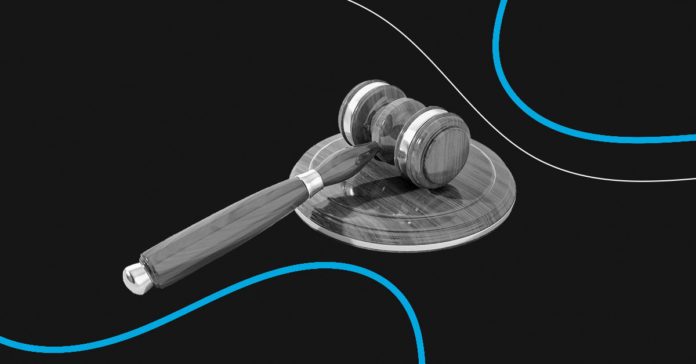The judiciary during the era of the Rightly-Guided Caliphs ranks second in importance only to the judiciary during the lifetime of the Prophet (ﷺ), which is the source of all Islamic law. Judicial law during the era of the Rightly-Guided Caliphs was a complete and perfect system of law, and it consisted of brilliant practical examples of what Islamic law represents. Judicial law during that golden era became an example for all ensuing generations.
The following, in summary, are the main features of the judiciary during the era of the Rightly-Guided Caliphs:
- The judiciary during the era of the Rightly-Guided Caliphs was an extension of what the judiciary was like during the lifetime of the Prophet (ﷺ). The Rightly-Guided Caliphs adhered to the Messenger’s methodology, such as by shortening the time it took to settle legal disputes. Moreover, as was the case during the lifetime of the Prophet (ﷺ), there were relatively a small number of cases and disputes they had to settle – a small number relative to the vast lands and large populations they governed. And as was the case during the lifetime of the Prophet (ﷺ), only qualified and knowledgeable judges were appointed to settle disputes.
- The judiciary during the era of the Rightly-Guided Caliphs was an authentic representation of true Islamic law. That is why researchers took such painstaking efforts to record and preserve the legal judgments of that era, and that is why Islamic jurists have written at great length about those judgments and have accorded them such a high level of importance. The legal judgments which were rendered during the era of the Rightly-Guided Caliphs became a source of Islamic legislation for jurists of all the ensuing generations. This is a point of agreement among all scholars and schools of jurisprudential thought in general, although they may disagree about details. For example, the scholars disagree about whether the saying of a Companion is considered a binding proof, a disagreement that is discussed at length in the science of Usool Al-Fiqh (the Principles of Islamic Jurisprudence); as well as in the sciences of Hadeeth and the History of Islamic Legislation.
- In addition to their duties as overall leaders of citizens, the Rightly-Guided Caliphs and certain governors took on the role of judges.
- In most cities and provinces, the Rightly-Guided Caliphs appointed men whose sole duty was to preside over disputes as judges. Thus it was during the era of the Rightly-Guided Caliphs that a new stage of Islamic judicial practice began – that of separating the judiciary from all other areas of authority. Based on this development, governors of provinces had no authority whatsoever over judges of large cities. A governor might have had the authority to appoint a judge for a large city, but once he appointed him, he no longer had any authority over him. This applied mainly to large cities. As for other cities, governors would act as both leaders and judges, and they would be accountable to the Khalifah.
- The judges who were appointed during the era of the Rightly-Guided Caliphs were Mujtahids -which means they were qualified and had the ability to derive legal rulings directly from the Qur’an and the Sunnah. If they did not find a ruling in the Book and the Sunnah, for a given problem or dispute, they would search out for precedents from past judges, and they would consult contemporary scholars. Then they would try to work out the problem and render a legal judgment based on their Ijtihaad, or the personal effort one makes to reason out a problem.
- Based on the judicial methodology we have hitherto discussed, new sources of judicial proofs came into existence during the era of the Rightly-Guided Caliphs. Thus the following were the sources that judges referred to when rendering a legal ruling: The Quran, the noble Sunnah, Ijmaa’, analogy, legal precedents, and personal opinion through the process of Ijtihaad and mutual consultation.
- In an administrative sense, the judiciary, during the era of the Rightly-Guided Caliphs, was organized in a detailed and comprehensive manner. Both Umar (ra) and ‘Ali (ra) sent famous and important letters to both judges and governors. In those letters, they expounded upon their judicial philosophy, explaining how the affairs of the judiciary should be organized, and what methodology judges should follow. The Rightly-Guided Caliphs did not limit themselves to merely appointing judges; after appointing judges, they followed up on their behavior and legal rulings; they supervised their activities; and, in a spirit of mutual consultation and cooperation, they exchanged views with them. They further demanded that they bring to their attention important cases that came their way. This process of continued supervision and consultation with judges was most apparent during the era of Umar (ra). That relationship diminished slightly during the era of Uthman (ra), and it became weak during the era of ‘Ali (ra). And it became weak for a number of reasons – such as the many trials that took place during the caliphate of ‘Ali (ra), the internecine fighting among Muslims, the beginning stages of autonomy in the area of Ash-Sham, and the vast number of cities and provinces which came into existence as a result of foreign conquests.
- In the early years after the Messenger’s death, judges, at least for the most part, were not limited to a specific field. Judges in those times were qualified and able to rule on a wide variety of issues. Each judge had the authority and the freedom to take on any case he chose. But later on during the era of the Right-Guided Caliphs, the seeds of specialization began to grow. For instance, certain judges were appointed to preside over minor disputes – the equivalent, if you will, of Small Claims Court. Other judges were appointed to rule on more important and significant matters. And in most instances, it was the Khalifah himself who made decisions that involved capital punishment – certain governors also ruled on such matters. It had also been the norm for one judge to be appointed for each city or region. However, as cities and populations grew, it became common for more than one judge to be appointed in the same city. This was especially the case in larger cities and regions, such as Madinah, Kufa, Basrah, and Yemen. And for the very first time, a military judge was appointed to accompany the Muslim army.
- As was the case during the lifetime of the Prophet (ﷺ), the legal rulings of judges were supervised. Those judgments that were in harmony with the Qur’an and Sunnah were affirmed. Their legal opinions were affirmed as well, even if they ran contrary to the opinions of the Khalifah. This is because the legal opinion of one judge who is presiding over a case cannot be cancelled out by the legal opinion of two another judge who is not presiding over the same case. A judge’s legal opinion can be rendered null and void only if it runs contrary to the Qur’an and Sunnah.[1]
- During the era of the Rightly-Guided Caliphs, judges began to receive salaries in an organized manner. They were given generous salaries, so that they would not be in need of any help from the people. Courthouses and jails were built, and for the very first time, some of the more eminent Companions refused to accept appointments as judges. For instance, when Uthman (ra) appointed Ibn Umar (ra) to be a judge, Ibn Umar (ra) refused to accept his appointment. Similarly, when Umar (ra) appointed Ka’ab In Yasaar In Dannah to become a judge in Egypt, Ka’ab (ra) refused to accept his offer.[2]
- During the era of the Rightly-Guided Caliphs, judicial proceedings were characterized by speed and ease, beginning with the listening of arguments and the presentation of proofs until the rendering of a judgment and then its execution. It was the policy of judges to protect the weak, to support the oppressed, to treat litigants equally, and to establish the truth upon all people, regardless of whether doing so involved rendering a judgment against the Khalifah or the governor. For the most part, if the parties involved did not voluntarily carry out the judge’s ruling, it was the judge himself who would enforce his ruling upon them. And his ruling would be carried out immediately after he rendered it.
During the era of the Rightly-Guided Caliphs, there were important administrative developments that took place. For instance, during the era of Umar (ra), scribes were appointed to work with judges. And during the era of Uthman (ra), policemen and bailiffs were hired to help judges carry out their duties. Finally, during the era of ‘Ali (ra), there were important developments in improving the way serious offenders were questioned. In short, ‘Ali (ra) contributed a great deal to developing the judiciary in the Muslim state.[3]
[The Biography Of Ali ibn Abi Talib (RA) by Dr. Ali Muhammad As-Sallabi, vol.1, p. 583-588]
Notes:
[1] Taareekh Al-Qadaa Fil-Islam (pg. 159).
[2] Taareekh Al-Qadaa Fil-Islam (pg. 160).
[3] Taareekh Al-Qadaa Fil-Islam (pg. 160).









